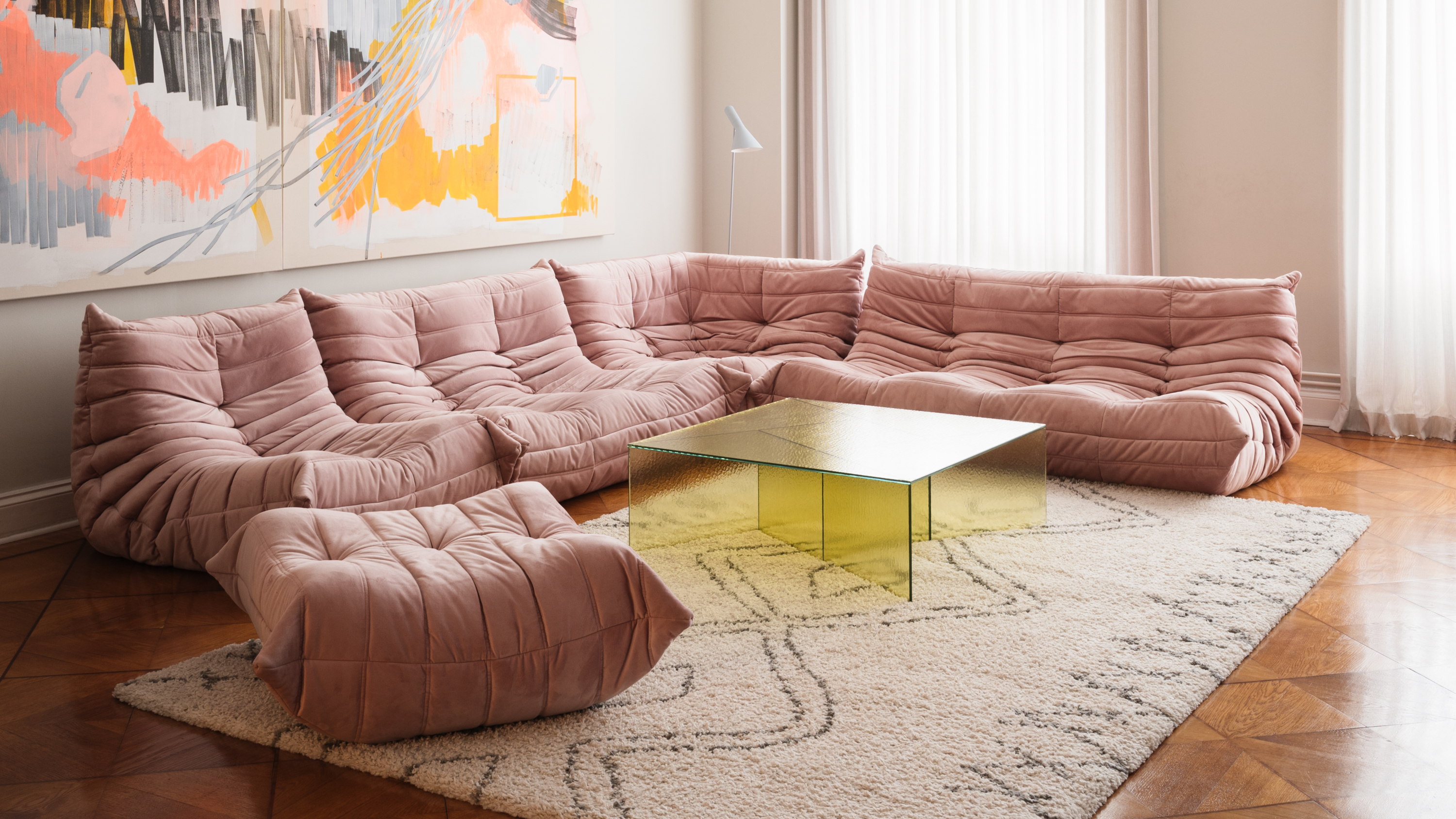
It’s easy to choose a couch if you follow your impulse, but selecting a sofa color that you won’t tire of and won't need replacing within a few months, deserves a little more thought as well as know-how.
The best sofa design is one that will complement the rest of the décor of your room and bring in a shot of color you love. And the cleverest sofa won't give to daily use, no matter who shares your home.
So what do you need to know to choose a sofa color you won’t regret? We asked interior designers to provide their professional expertise to help you get it right.
1. Consider your lifestyle
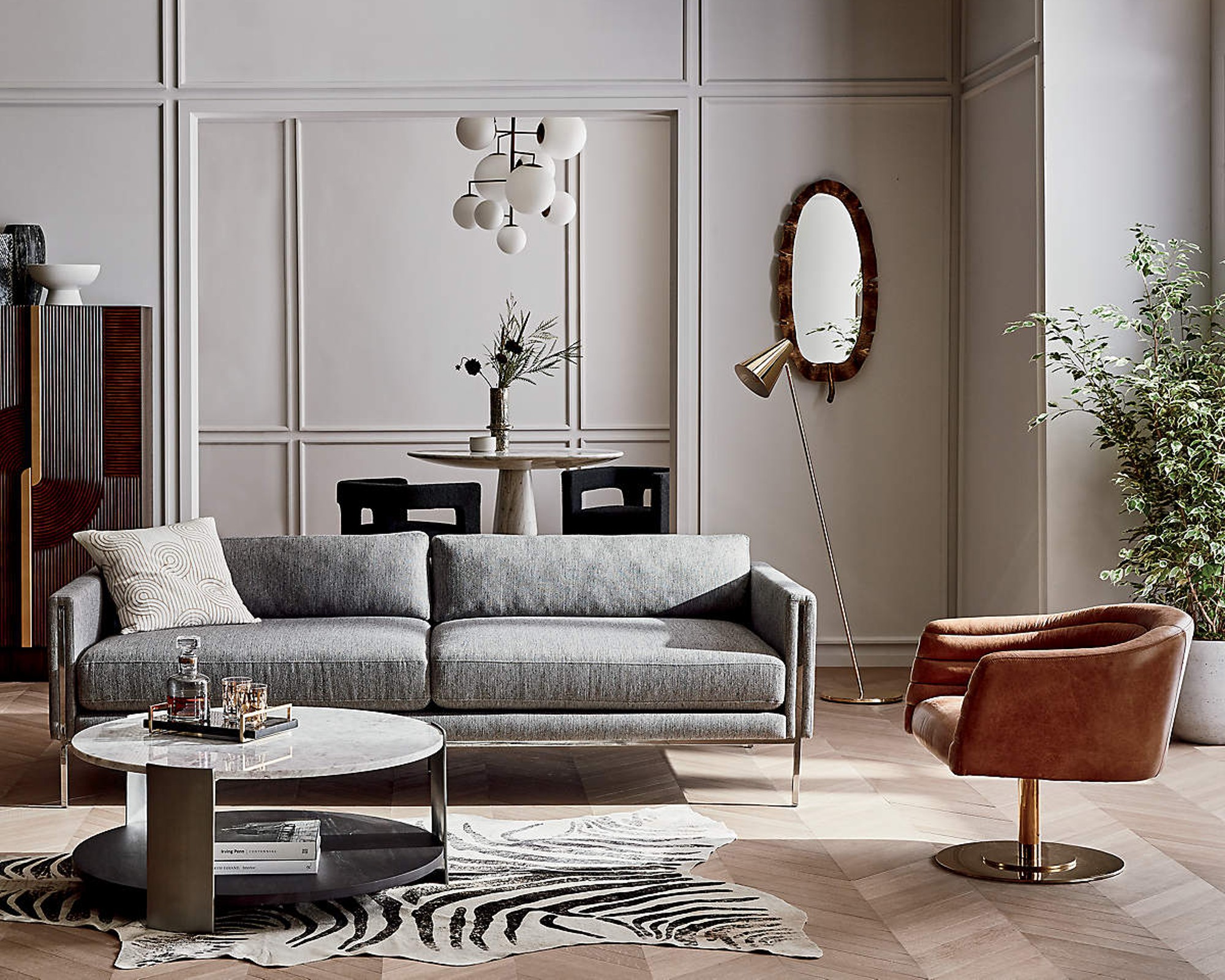
Your lifestyle matters if your sofa is to stay stain-free and not leave you with lengthy cleanup jobs.
“When selecting a sofa for homes with pets, mid-tone shades like gray or taupe are ideal for concealing pet hair and minor stains, while patterned fabrics can help mask daily wear,” advises Challie Stillman, vice president of creative at Resource Furniture. “For homes with children, similar principles apply. Mid-tone neutrals and patterns are great for hiding spills and dirt."
We also recommend thinking about fabric. The best couch materials for dogs stand up to paws, claws, and dander.
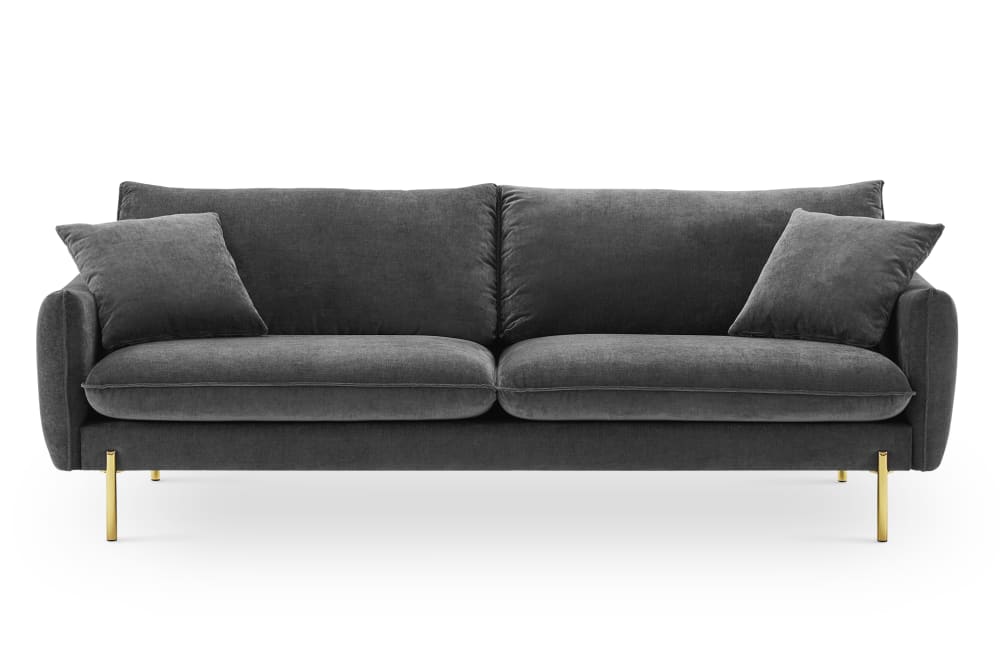
Price: $1,259
Go gray for the perfect balance of hiding marks, while not showing hair or dust.
2. Focus on your color scheme
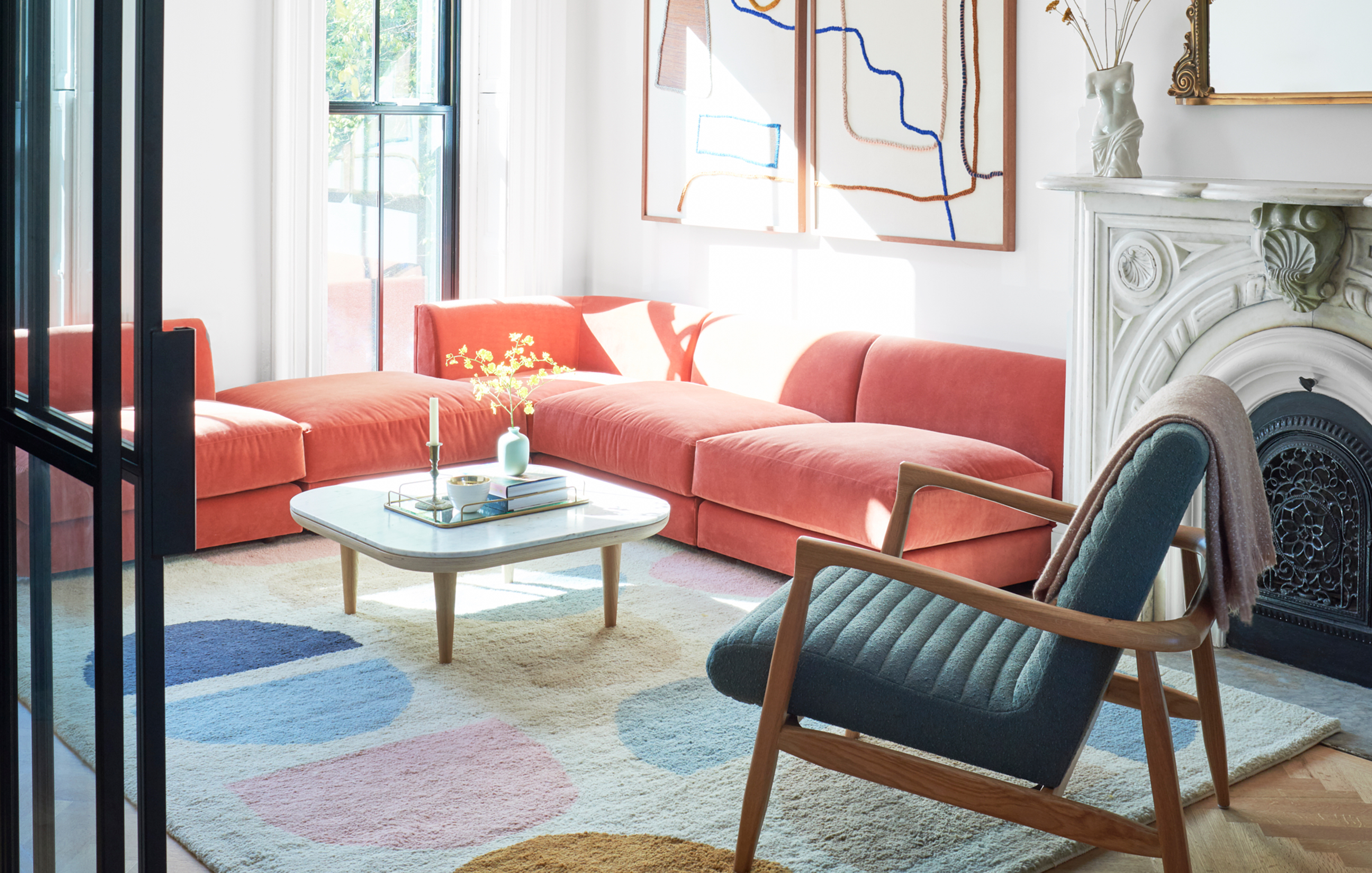
A sofa’s color needs to complement the remaining hues used in the room for a pulled-together design.
Interiors professionals suggest you might therefore approach choosing the sofa’s color in one of two ways. “When working with a room’s existing color scheme, consider the sofa either as a focal point or a complement,” says Stefano Sette, brand ambassador at CHITA LIVING. “If you want it to stand out, choose an accent color that contrasts or pops against the walls or other furniture.”
The second approach? “For a more balanced look, use the 70-20-10 rule: 70 percent should be a neutral or dominant color, 20 percent a secondary color, and 10 percent for accents,” says Stefano. “Generally, the dominant color is used for large furnishings (as well as the walls). If this color is a neutral in your scheme, you should make sure the main sofa sets use that hue. The secondary color should be found in smaller furnishings. Finally, the accent color should be incorporated through smaller accessories and decor details.”
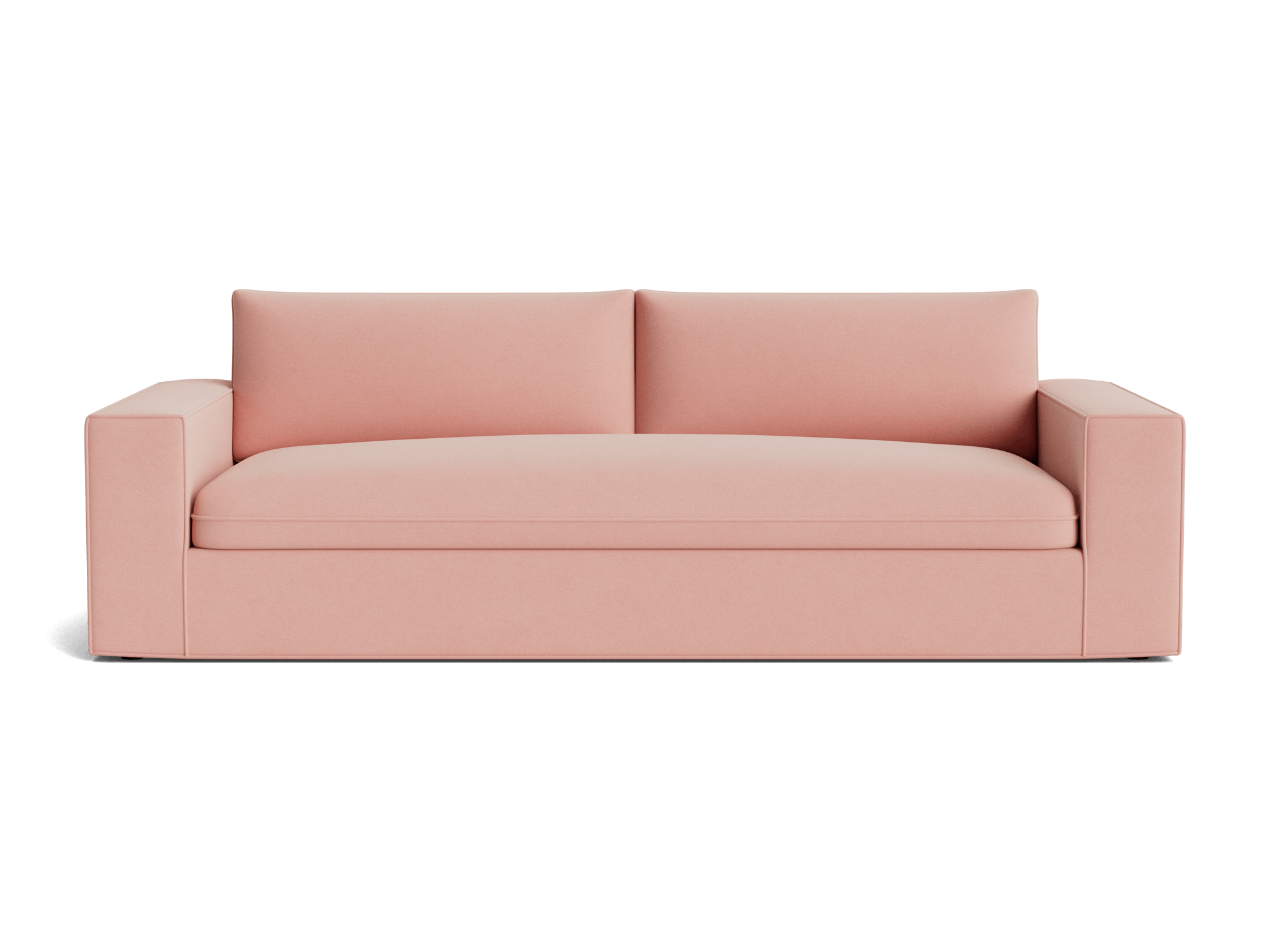
Price: $1,638
Getting the look of this bold peach sofa isn't easy, but we love this pleasing blush tone from Joybird for it's clean, vibrant style.
3. Think room ambiance

Because it’s a dominant piece of furniture, the sofa’s color also helps set the room’s mood and contributes to whether it feels like an airy or cozy living room, so select it with this in mind, too, say the experts.
“Lighter colors can make small rooms feel more spacious, while darker tones can create a cozier, more intimate vibe,” says Challie Stillman.
Price: $899.99
A rich dark green brings a moody elegance to your living room. This design's an affordable option that looks expensive.
4. Factor in natural light
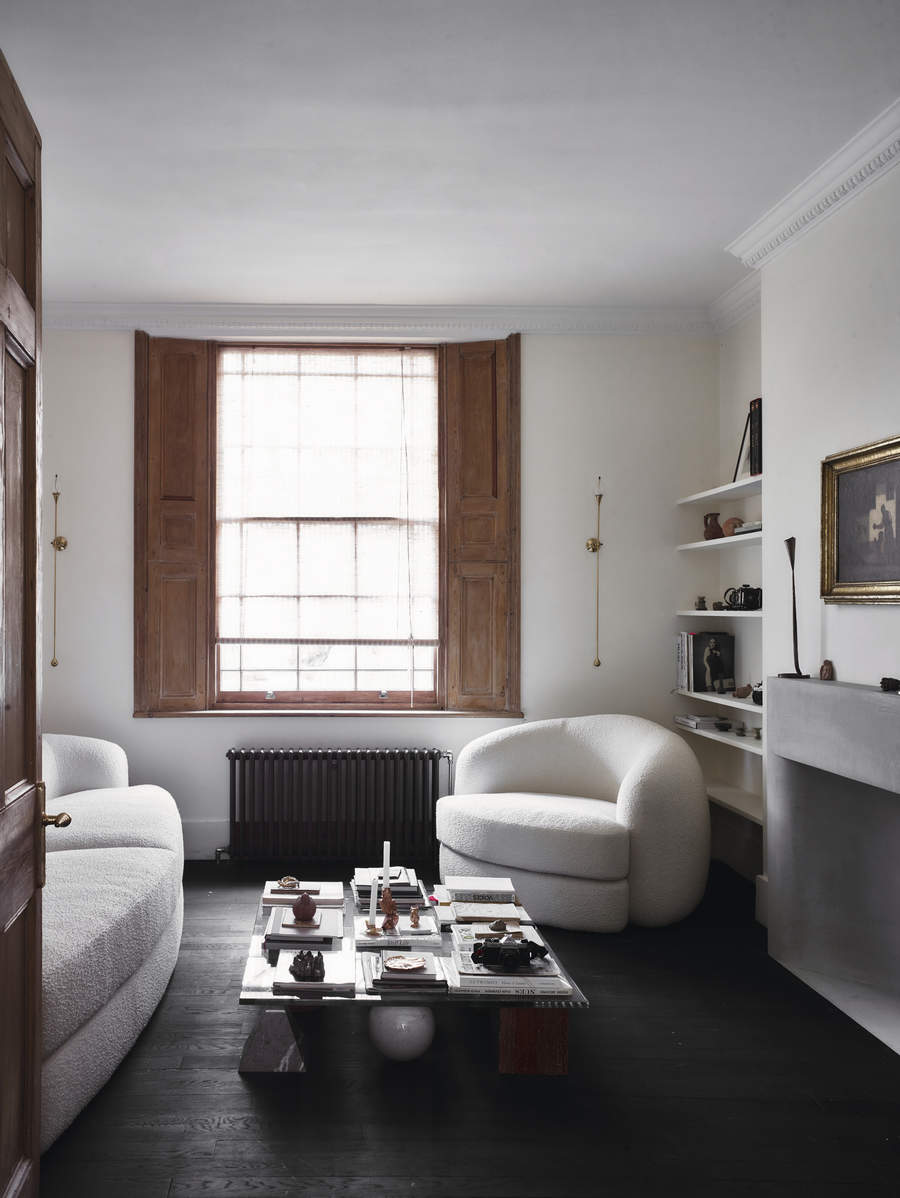
The natural light that reaches the room isn’t always considered when it comes to choosing the best sofa color, but it is important. “Natural light can dramatically change how colors appear — cool, northern light may make them look more subdued, while warm, southern light can enhance their vibrancy,” says Challie. “That’s why it’s essential to test colors under different lighting conditions in your home to ensure they feel right.”
When considering how long your sofa should last, you should also consider that its color can change under strong sunlight. “In terms of concerns about sun fading and UV rays, it’s less about the color as the composition of the fabric itself,” says Alexandra Peck, owner and principal at Alexandra Peck Design. “If you have a sun-drenched room, performance fabrics are the answer. Solution-dyed acrylic fabrics are used in outdoor applications as they are extremely durable and can outlast against the elements and strong sunshine.”
Bear in mind, too, that some colors fare better in sunlight overall. “Sticking with white, cream, light tan, and light gray are all safe bets when it comes to maintaining their color as there is little color to fade,” she says.
Price: $1,619.98
A comfortable, white sofa is often the best choice for a sun-drenched room. This one has a deep seat and soft teddy fabric.
5. Weigh up trends
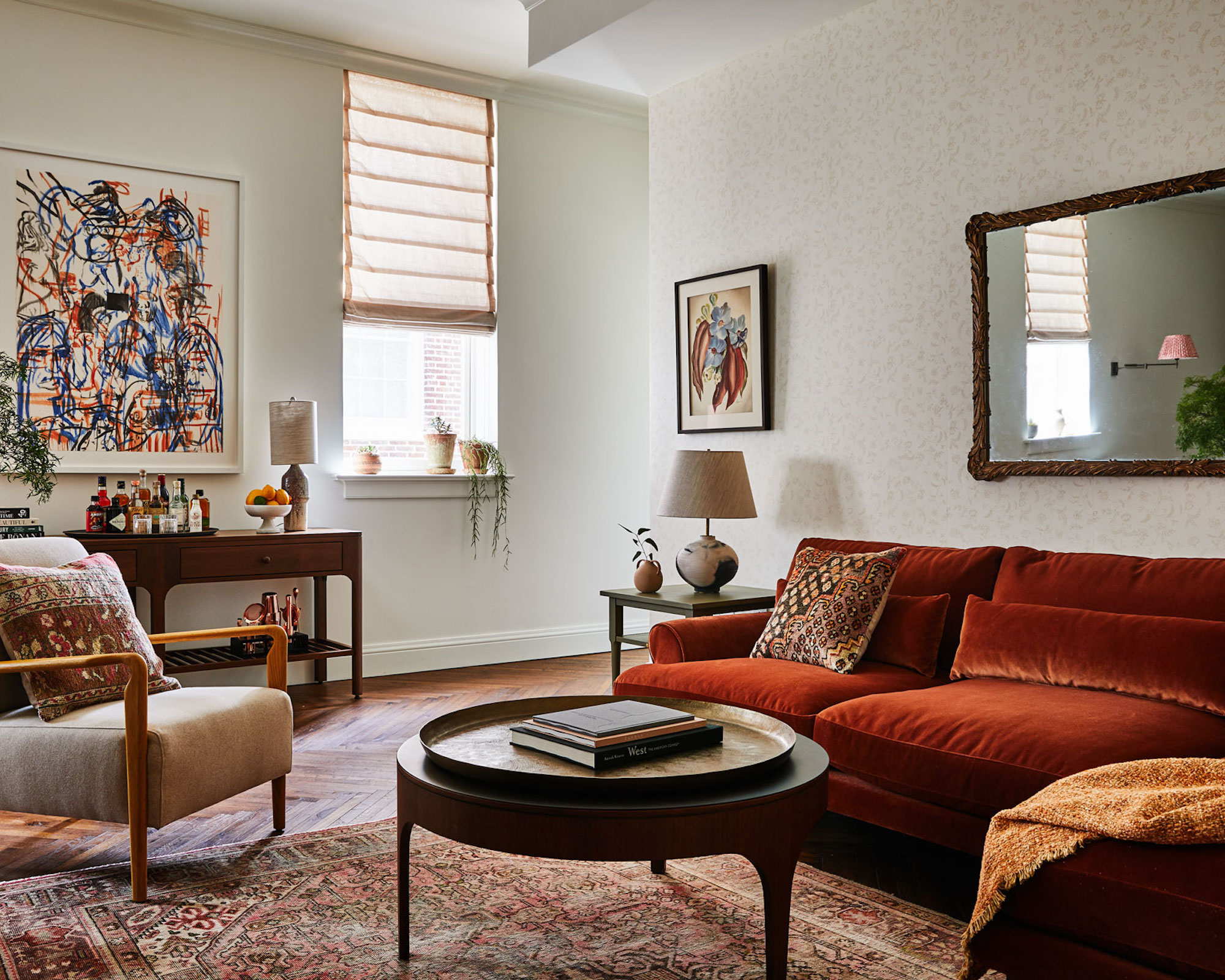
Fallen for the must-have sofa color trend of the season? Be cautious, say interiors pros.
“While choosing a trendy color can be exciting, it’s important to think long-term,” says Stefano Sette. “A sofa is an investment, so consider how much you’ll love that color in a few years. If you follow trends, you might try introducing them in smaller ways. Consider incorporating throw pillows or blankets to keep the sofa color more timeless.”
Stacy Garcia, founder and chief inspiration officer at Stacy Garcia Design Studio, also recommends looking long-term when choosing the best sofa color for you. “When choosing a sofa color, it’s useful to look at overarching trends, not only what is currently trending,” she says. “Neutrals continue to be a favorite for interior designers because they serve as a blank canvas that you can use to anchor the rest of the space. They also create a sense of calm, which is essential during times of stress caused by external factors in our society.”
Neutrals can be winners in the long run, agrees Ginger Curtis, founder and CEO of Urbanology Designs. “While trendy colors are appealing, neutral shades like creams and taupes offer long-term versatility.” However, these aren’t the only options. “A black, dark green sofa or deep rich blue sofa also have staying power,” she says.
And Alexandra Peck agrees that deeper colors can be very attractive. “These days in a world where the majority of sofas are white, cream, or light gray I love seeing a sofa drenched in color; there is something so compelling about it,” she says.
“I tend to steer my clients towards earth tones such as sage green or jewel tones such as amber red or sapphire blue. These colors add so much vibrancy to a room and really warm a space up. I do pair these punchy sofas with calmer supporting hues and wood tones so there is a nice balance and flow for the eye to wander.”
6. Draw on color psychology

You might want to think about color psychology in interior design when you’re thinking about the best sofa color.
“Softer, cooler tones like blues or greens promote relaxation, making them ideal for spaces meant for unwinding, like living rooms,” says Stefano Sette. “Warmer tones like reds and oranges can energize a space, making them better suited for rooms where you entertain. Neutrals like beige or gray offer flexibility and a sense of calm.”
FAQs
What sofa color goes with everything?
If you want to be sure your sofa color goes with everything, stick to a neutral hue.
“You can’t go wrong with neutrals and this is why you see so many white, cream, tan, or light gray sofas,” says Alexandra Peck, owner and principal at Alexandra Peck Design. “Personally I’m partial to beige/tan sofas: they have warmth and without a doubt pair with anything. Besides a fabric upholstered tan/beige sofa, you could also consider a beautiful leather sofa for a little dash of variety.”







